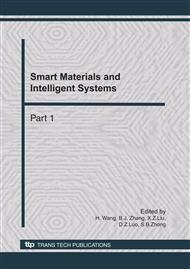p.493
p.499
p.503
p.509
p.515
p.521
p.527
p.533
p.538
Composition Identification of Typical Decorative Textiles in Tibetan Historical Buildings by Burning Test and Projection Microscope Test
Abstract:
To prevent decorative textiles from fires, forty seven fabrics sampled from the Potala Palace were first identified by burning and optical projection microscope tests. The main component fibers were figured out to be cellulose fiber (viscose, most much used), synthetic fibers (polyethylene terephthalate, polyamide and polypropylene, secondly much used) and protein fibers (silk and wool, a little used). The five warp and weft blending forms were found to be: Polyethylene Terephthalate and Polyethylene Terephthalate, (Polyamide or Polyethylene Terephthalate or Silk or Viscose or Wool) and Viscose, Viscose and Silk, (Polyethylene Terephthalate or Polyamide) and Polypropylene, Viscose and Polyamide. Such identification work has been done academically for the first time, and it is important for the safe conservation of special Tibet historical buildings and internal cultural relics.
Info:
Periodical:
Pages:
515-519
Citation:
Online since:
October 2010
Price:
Сopyright:
© 2011 Trans Tech Publications Ltd. All Rights Reserved
Share:
Citation:



